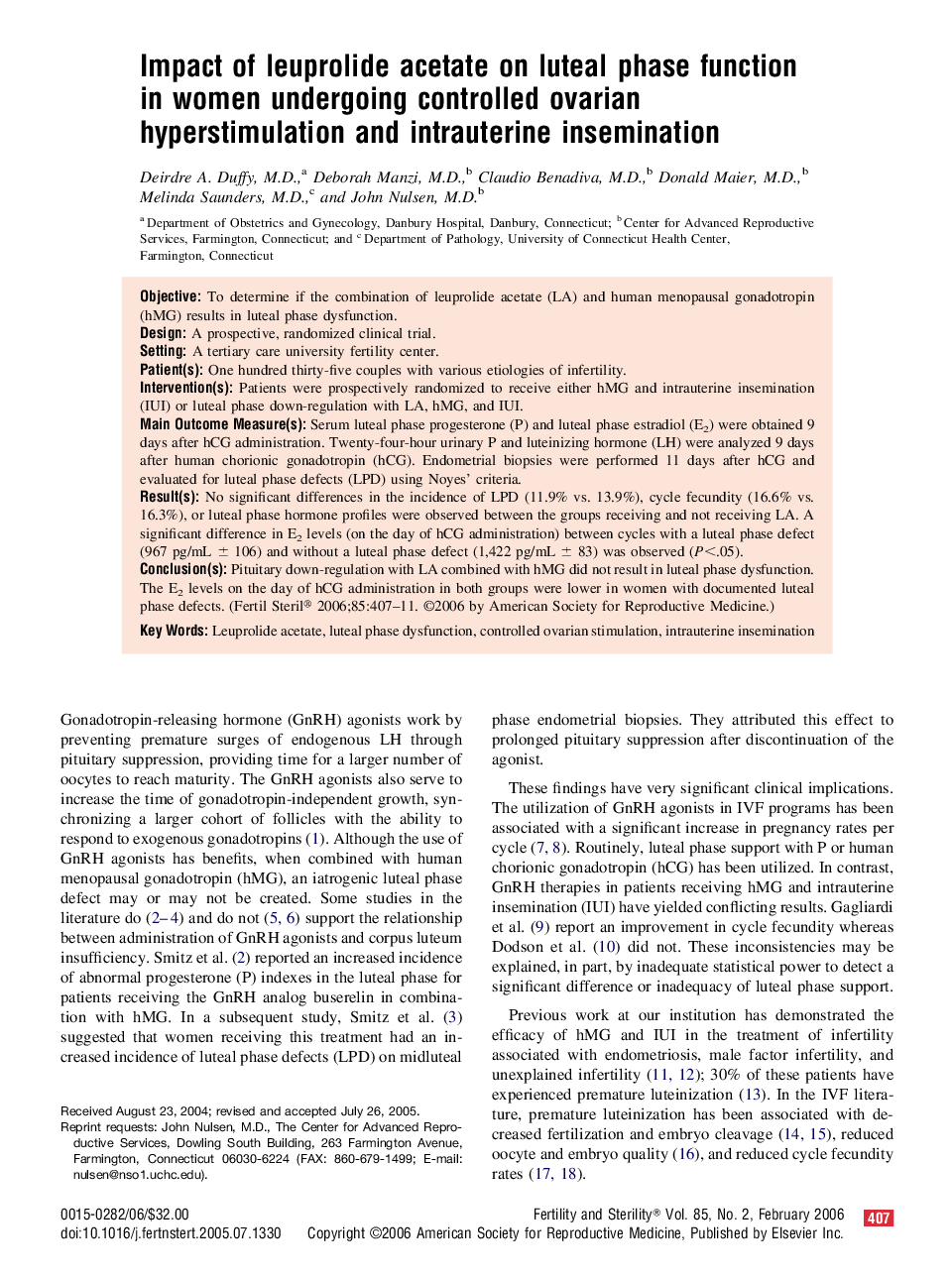| Article ID | Journal | Published Year | Pages | File Type |
|---|---|---|---|---|
| 3940911 | Fertility and Sterility | 2006 | 5 Pages |
ObjectiveTo determine if the combination of leuprolide acetate (LA) and human menopausal gonadotropin (hMG) results in luteal phase dysfunction.DesignA prospective, randomized clinical trial.SettingA tertiary care university fertility center.Patient(s)One hundred thirty-five couples with various etiologies of infertility.Intervention(s)Patients were prospectively randomized to receive either hMG and intrauterine insemination (IUI) or luteal phase down-regulation with LA, hMG, and IUI.Main Outcome Measure(s)Serum luteal phase progesterone (P) and luteal phase estradiol (E2) were obtained 9 days after hCG administration. Twenty-four-hour urinary P and luteinizing hormone (LH) were analyzed 9 days after human chorionic gonadotropin (hCG). Endometrial biopsies were performed 11 days after hCG and evaluated for luteal phase defects (LPD) using Noyes’ criteria.Result(s)No significant differences in the incidence of LPD (11.9% vs. 13.9%), cycle fecundity (16.6% vs. 16.3%), or luteal phase hormone profiles were observed between the groups receiving and not receiving LA. A significant difference in E2 levels (on the day of hCG administration) between cycles with a luteal phase defect (967 pg/mL ± 106) and without a luteal phase defect (1,422 pg/mL ± 83) was observed (P<.05).Conclusion(s)Pituitary down-regulation with LA combined with hMG did not result in luteal phase dysfunction. The E2 levels on the day of hCG administration in both groups were lower in women with documented luteal phase defects.
